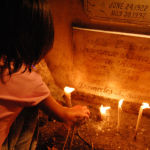
The Art of Doing Nothing: A Perspective to the Tale of Juan Tamad
You remember Timon and Pumba’s hakuna matata (no worries) and Eat, Pray, Love’s dolce far niente (the sweetness of doing nothing) – two concepts that relate to the art of doing nothing. While other cultures seem to embrace idleness and call it art, the closest that exists within the Philippine context is arguably the tale of Juan Tamad.
Obviously, it isn’t like hakuna matata and dolce far niente, sayings that we’d quote when we want to justify our idleness. “A weekend without internet, because hakuna matata” sounds like a sweet Facebook status. Anyone who says something like, “Idling like Juan Tamad” is either deliberately joking or being smug.
Of course, “tamad,” the operative word puts the very concept to shame. In fact, it acts as a cautionary tale, one that our elders use to warn their idling grandchildren.
I’m not a history buff, but I suspect it has something to do with the Spaniards’ take on the Filipinos’ napping in the afternoon for one, as explained by Dr. Jose Rizal in his essay, The Indolence of the Filipinos. Although Dr. Jose Rizal justified why Filipinos were lazy during the Spanish regime, to be compared to the character is an outrage. Alas, it became a pained symbol, something we deny to exist in the culture.
But try to look at the idea – the Filipino idea of doing nothing, like dolce far niente in Italy or liming in the Caribbeans. If our elders left Juan alone as well as his affair with the bayabas and came up with a rightful term that defines idleness the Filipino way, what would we have? Siesta might be close, but it’s napping and not consciously idling.
Imagine lying under the bayabas tree or any tree, mind wandering and unrestrained until the afternoon heat and the occasional wind lull it to sleep, mouth opening from lack of resistance. I think our version is really and wholly Juan Tamad’s kind of idling, only it was spitefully named and carelessly labeled as laziness.
Despite this, we do idle. Sometimes we dedicate a moment doing nothing, perhaps after a tiresome week. Sometimes, we feel guilty for the lack of action but we still idle anyway. The workaholic either mocks it or craves it and the lazy does not appreciate it, but the true idler knows he or she deserves it and knows that it’s essential to the well-being.
To do nothing properly is to let go of everything, iPhone and internet included. It’s to gaze at the sunset without the urge to snap an Instagram-worthy photo. It’s to let the mind wander until satisfaction pulls it back in.
Other cultures have their own ways to carry out this mind-invigorating art. If the Filipino way is to lie under the tree, listening to the sound of birds, watching the clouds drift, the mind drifting with them, then it’s a nice way to idle although those from the city might need to devise something else entirely.
(Photo by Agustin Rafael Reyes)
More From Our Site
Des Cambaliza is a traveler, nature lover, and an entrepreneur who tries to capture in photos how she sees the world.









